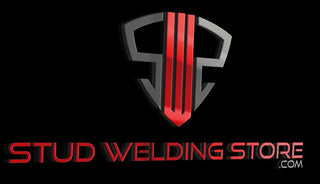Ferrule Selection
Ferrules come in different configurations to fit your stud welding application. Click here for ferrule specifications, but here are the basics:
- F = Flat - Can be used in downhand applications with Headed Studs, Fully Threaded Studs and Deformed Bar and Vertical Applications 3/8" Diameter and below.
- FHD = Flat Heavy Duty - Can be used in downhand applications with Headed Studs, Fully Threaded Studs and Deformed Bar and Vertical Applications 3/8" Diameter and below. This is the preferred ferrule for Headed Studs.
- C = Collar Stud - Used in collar stud or low profile/short stud applications.
- P = Pitch - Used in partially threaded stud applications since the unthreaded portion of the stud has a smaller diameter than the threads, so the ID of the ferrule is smaller to accommodate the pitch.
- R = Reduced Base - Used with reduced base studs. Example: a 5/8-11 threaded stud with a 1/2" unthreaded portion at the weld end of the stud.
- TD = Thru-Deck - Applicable to 1/2", 5/8" and 3/4" diameter Headed Studs that are to be welded thru-deck for composite floor applications.
- TDW = Thru-Deck Wired - For 3/4" Diameter thru-deck applications when used with the Rapid Ferrule System.
- A = Angle - For shooting studs to the inside or outside of an angle.
- V = Vertical - Usually for 1/2", 5/8" and 3/4" applications when shooting studs to a vertical surface. For 1/2", the FHDS Ferrule is preferred for vertical applications.
- FHDS - Flat Heavy Duty Special - Preferred for 1/2" vertical applications since it has a finer tooth pattern, which assists in molten metal loss at bottom. Specials are preferred also because the vertical ferrules require proper orientation with flat side down which is time consuming. Especially suited for 1/2" Deformed Bar Anchor (DBA) when shooting to a vertical surface.
